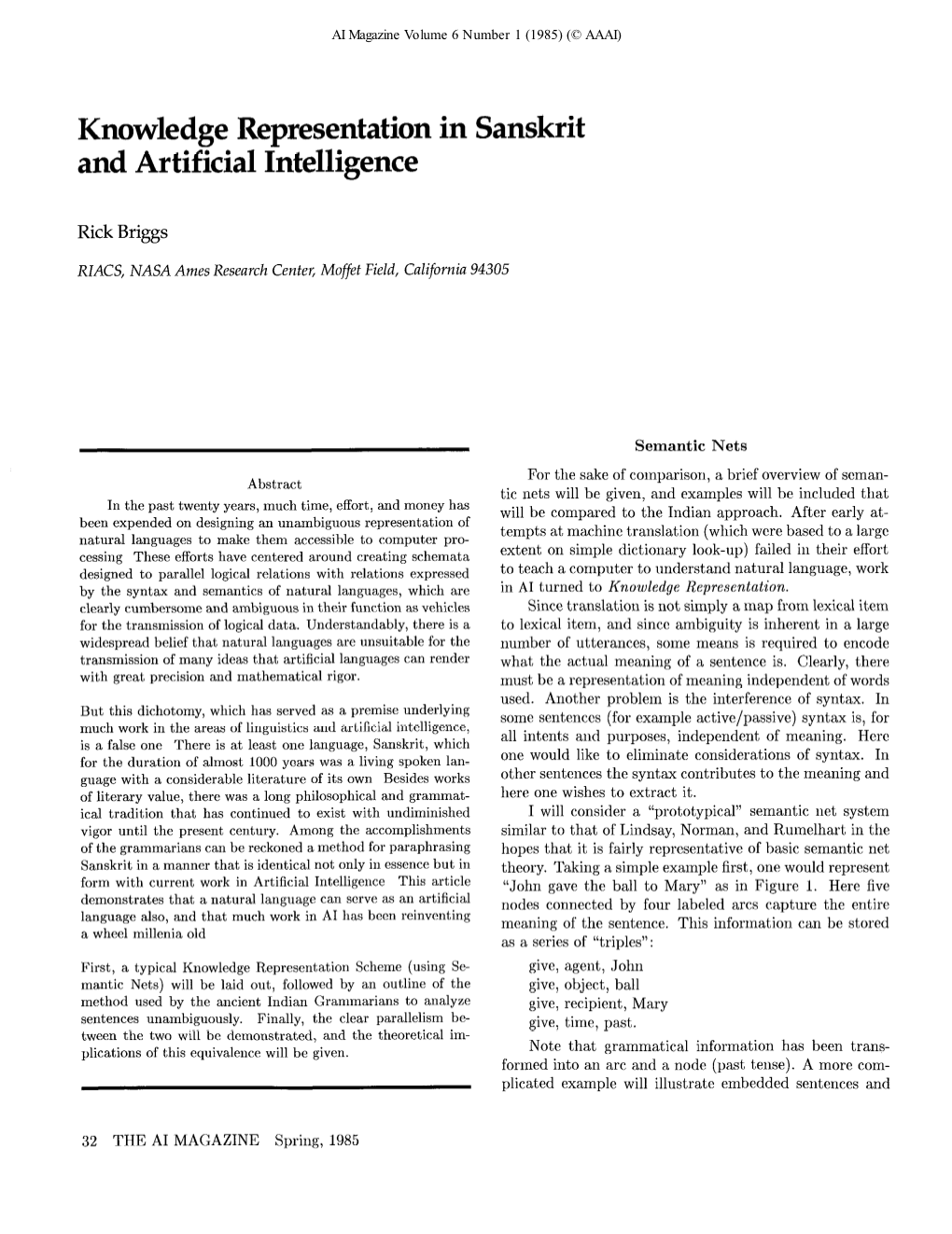Knowledge Representation in Sanskrit and its Relevance to Artificial Intelligence
Understanding Early Work in Knowledge Representation
Early attempts in artificial intelligence focused on creating unambiguous representations of natural languages to make them accessible to computer processing. Researchers centered around designing schemata that could parallel logical relations expressed through natural language syntax and semantics. However, natural languages proved cumbersome and ambiguous for transmitting logical data precisely. This led to the belief that artificial languages could express many ideas with greater precision and mathematical rigor compared to natural languages.

A Paper that Connected Sanskrit Grammar to Knowledge Representation
In 1985, a paper titled “Knowledge Representation in Sanskrit and Artificial Intelligence” was published in the journal AI Magazine. Authored by Rick Briggs, the paper aimed to show how a natural language like Sanskrit could serve as an artificial language. It outlined a typical knowledge representation scheme using semantic nets and described the method used by ancient Indian grammarians to unambiguously analyze sentences. The paper demonstrated the clear parallelism between the two approaches.
Grammatical Structure of Sanskrit enabled Unambiguous Representation
Sanskrit evolved from Prakrit languages with very strict grammatical rules. As a result, in Sanskrit a single word or sentence has only one meaning, avoiding ambiguity. Due to this unique feature, machines would not face confusion while processing Sanskrit. Further, Sanskrit grammarians like Panini had formalized the language structure millennia ago, enabling unambiguous syntactic parsing. This level of formalization was comparable to knowledge representation schemes used in early AI research.
Lessons for AI from Panini’s Work on Sanskrit Grammar
Panini’s work on Sanskrit grammar from 4th century BC included formally defining the valid forms of words and sentences. His rules could transform the root form of a word to specify its properties like gender, number, tense, etc. Similarly, grammatical relations between words were also represented. Panini’s work pioneered the idea of using rewriting rules for language definition, which find parallels in Backus–Naur form and context-free grammars. This established that as early as antiquity, works existed connecting natural language grammar to techniques relevant to AI.
Potential of Sanskrit remained Untapped in Modern AI Development
While the paper highlighted connections between Sanskrit grammar and AI-related areas like knowledge representation, the potential of Sanskrit was not fully realized. Subsequent development of AI largely relied on newly created artificial languages rather than exploring ways to apply insights from Sanskrit. Later research focused more on ambiguities in natural languages as an impediment for machine understanding. As a result, fields like programming moved to designing domain-specific languages for well-defined semantics and clarity. However, the scientific rigor underlying the Sanskrit grammatical tradition indicates its study can provide useful perspectives for modern NLP and knowledge engineering efforts.
Future Scope for Interdisciplinary Work at the Confluence of Sanskrit and AI
With current interest in areas like constitutional AI and embodiment of ethics in advanced systems, traditional knowledges like those preserved through Sanskrit grammar can offer relevant philosophies. Specifically, interdisciplinary research at the intersection of Sanskrit studies and varied AI sub-domains could help address challenges like:
- Developing knowledge schemas inspired by Panini’s rules that formalize relations between concepts in a learnable manner for machines.
- Enhancing explainability of deep learning models through incorporation of interpretability frameworks grounded in philosophical thought from ancient India.
- Augmenting contemporary NLP techniques with insights into semantic disambiguation as formalized for Sanskrit to make language understanding more robust.
While practical limitations prevented realization of Sanskrit’s full potential for AI historically, the bridge between the two fields remains scientifically compelling. Future work at this intersection holds promise for more humanistic and sustainable progress in AI.
